
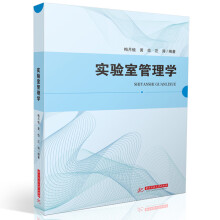
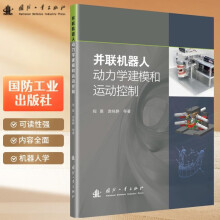
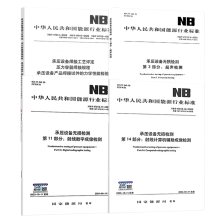
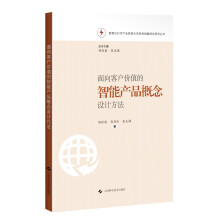
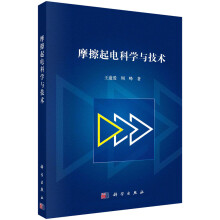
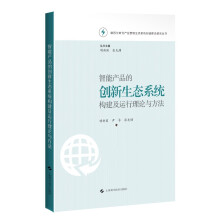
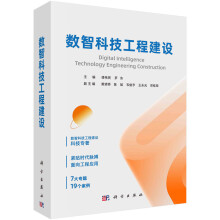

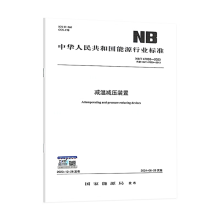

本书是基于作者多年在表面等离激元催化领域的科研成果,结合本领域的前沿科技进展,详述了表面等离激元-激子杂化在表面等离激元杂化领域的科研进展,详细全面地系统介绍。
CHAPTER 1
Introduction
When light shone a precious metal surface,the SP was a collective oscillation about free electrons present at the interface between the metal and the dielectric.There are two types of SP: the local SP and the propagating SP.According to local SP resonance,the tipenhanced Raman scattering(TERS)and the surfaceenhanced Raman scattering(SERS)spectra had been extensively used in the field of nanoscale ultrasensitive Raman analysis.Surface catalysis accelerated the rate of the chemical reactions as a result of the less active energy required to add the catalyst.Therefore,we need to find more efficient and stable catalysts to accelerate the chemical reactions rate,which is a huge challenge we are facing now.In order to enhance the efficiency and probability about plasmon exciton codriven chemical reactions,we could consider the application of electrooptical synergy.
In our previously studies,the plasmonic waveguide had been used in the field of the remotely excited SERS spectroscopy successfully.Remotely excited SERS had many special advantages over the traditional SERS.In normal SERS,when the excited light was concentrated on the detected spot,called local SERS,and in the remote SERS,the excitation point was far from the observed target,and the SP polaritons(SPPs)with the remote mode excited the target.Because the gold and silver waveguides transmit optical signals through the SPPs,they provided a method to go below size limit.The SPPs could propagate down the metal waveguide and transmit free photons at the end of the waveguides or at the imperfections,some of which were lost owing to the ohmic damping.
In this book,to begin with,plasmon catalysis for the activation energy offered by plasmonicsinduced hot electrons had been exposed in a large number of chemical reactions,such as in atmospheric,liquid and HV conditions and so on.In addition,we used the femtosecond pumpprobe transient absorption spectroscopy to learn the physical principles of the plasmon exciton coupling interaction about the surface catalytic reactions.Then,we reported the electrically enhanced about the surface oxidation or reduction catalytic reactions at the plasmon exciton hybrid interface.Next,we presented the latest research progress report about the surface catalytic reactions driven by propagating SPPs(plasmon waveguides).Furthermore,we could know that p,p′dimercaptoazobenzene(DMAB)could be produced from the paminothiophenol(PATP)by propagating SPPs(PSPPs),which was a plasmon driven oxidation reactions,while DMAB was generated from the 4nitrobenzenethiol(4NBT)by transporting SPPs,which was a reduction reactions driven by a plasmon waveguide.Last but not least,we researched the molecular resonance dissociation about the surfaceadsorbed molecule by plasmon nanoscissors.
All the color figures please scan the QR code.
CHAPTER 2
SPDriven Oxidation Catalytic Reactions
21SPDriven Oxidation Catalytic Reactions by SERS in Atmosphere Environment
211Genuine SERS Spectrum of PATP
In previously studies, the authors researched the genuine SERS spectra of PATP by selecting the appropriate SERS substrate and by a lower concentration of PATP solution, however, the authors did not observe the vibrational mode of the DMAB at 1140 cm-1, 1390 cm-1, and 1432 cm-1, and the SERS spectrum was equal to the Raman spectrum of the PATP powder. This experiment used a HeNe laser as the excitation source with 6328 nm. In the Raman experiment, the laser power was limited to 001 mW and a 100×objective used on the SERS sample. The data acquisition time was 10 seconds. Here the authors detected the NRSS about the PATP as a control experiment.
Figure 1(a) displayed the normal Raman scattering (NRS) spectroscopy of PATP powder, and Fig1(b) showed the SERS spectrum[1]. The authors could find that the former and the latter had the same spectrum. However, the authors did not observe DMAB vibration mode at 1140 cm-1, 1390 cm-1, and 1432 cm-1, respectively. This demonstrated that the SERS spectrum was derived from a PATP monomer rather than a DMAB dimer consisting of two PATP molecules. The Fig1(c) displayed the simulated
Fig1(a) NRS spectrum of PATP powder; (b) SERS spectrum of PATP; (c) The simulated Raman spectrum of PATP adsorbed on Ag5 cluster[1]
Raman spectrum about the PATP adsorbed on the Ag5 cluster, and the experimental results in Fig1(b) were proved. Six vibration modes were shown in Fig2. Figures 3(a) and (b) revealed the SERS spectrum of the
Fig2Vibrational modes of PATP adsorbed on Ag5 cluster in Fig1(c)[1]
(For colored figure please scan the QR code on page 2)
PATP at the beginning and after 60 seconds, respectively, when the laser was continuously illuminated on the sample. Using the spectrum in Fig3(a) as a control, three strong Raman signals about DMAB at 1140 cm-1, 1390 cm-1, and 1432 cm-1 could be observed clearly in the Fig3(b). In addition, the vibration of the Raman signal of the PATP at 1610 cm-1 could be observed in Fig3(a) but not observed in Fig3(b). This demonstrated that PATP underwent a dimerization reaction to convert to DMAB by increasing the irradiation time. As was demonstrated in the Fig3(c), a characteristic SERS spectrum about the
PATP in a silver aggregation system, where the experimental conditions were the same as described above. The authors could see that Fig3(c) displayed three stronger Raman signals about the DMAB at 1140 cm-1, 1390 cm-1, and 1432 cm-1, with a radiation time of only 10 seconds[2,3]. Since, in such a system, it was impossible to find the genuine SERS spectrum about the PATP practically. Therefore, the authors made the chemical reactions rate of dimerization faster by increasing plasmon enhancement. And the mode assignments about the DMAB was displayed in Fig3(c)[2].
CONTENTS
CONTENTS
CHAPTER 1Introduction
CHAPTER 2SPDriven Oxidation Catalytic Reactions
2.1SPDriven Oxidation Catalytic Reactions by SERS in
Atmosphere Environment
2.1.1Genuine SERS Spectrum of PATP
2.1.2SPDriven Oxidation Catalytic Reactions of PATP
2.1.3SPDriven Oxidation Catalytic Reactions on Metal/
Semiconductor Hybrids
2.2SPDriven Oxidation Catalytic Reactions by SERS in
Aqueous Environment
2.3SPDriven Oxidation Catalytic Reactions by TERS in
Ambient Environment
2.4SPDriven Oxidation Catalytic Reactions by TERS in
HV Environment
CHAPTER 3SPDriven Reduction Catalytic Reactions
3.1SPDriven Reduction Catalytic Reactions in Atmosphere
Environment
3.1.1SPDriven Reduction Catalytic Reactions by SERS in
Atmosphere Environment
3.1.2SPDriven Reduction Catalytic Reactions on Metal/
Semiconductor Hybrids
3.2SPDriven Reduction Catalytic Reactions by SERS in
Aqueous Environment
3.2.1Setup of Electrochemical SERS
3.2.2PotentialDependent Plasmon Driven Sequential
Chemical Reactions
3.2.3pHDependent Plasmon Driven Sequential Chemical
Reactions
3.2.4Electrooptical Tuning of Plasmon Driven Double
Reduction Interface Catalysis
3.3The Stability of Plasmon Driven Reduction Catalytic Reactions
in Aqueous and Atmosphere Environment
3.4SPDriven Reduction Catalytic Reactions by TERS
3.4.1SPDriven Reduction Catalytic Reactions by TERS in
Ambient Environment
3.4.2SPDriven Reduction Catalytic Reactions by TERS in
HV Environment
3.4.3Plasmon Hot Electrons or Thermal Effect on SPDriven
Reduction Catalytic Reactions in HV Environment
CHAPTER 4Photo or Plasmon Induced Oxidized and Reduced
Reactions
CHAPTER 5The Priority of Plasmon Driven Reduction or
Oxidation Reactions
5.1Plasmon Driven DiazoCoupling Reactions in Atmosphere
Environment
5.1.1Characterization of SERS and GrapheneMediated
SERS Substrate
5.1.2Selective Reduction Reactions of PNA on the Ag NPs
in Atmosphere Environment
5.1.3Selective Reduction Reactions of PNA on the Surface
of GAg NPs Hybrids in Atmosphere Environment
5.1.4Hot ElectronInduced Reduction Reactions of PNA
on GAg NWs Hybrids in Atmosphere Environment
5.2The Priority of Plasmon Driven Reduction or Oxidation in
Aqueous Environment
5.3The Priority of Plasmon Driven Reduction or Oxidation in
HV Environment
CHAPTER 6Plasmon Exciton Coupling Interaction for Surface
Catalytic Reactions
61Plasmon Exciton Coupling Interaction for Surface Oxidation
Catalytic Reactions
6.1.1Characterization of Ag NPsTiO2 Film Hybrids
6.1.2Ag NPsTiO2 Film Hybrids for Plasmon Exciton
Codriven Surface Oxidation Catalytic Reactions
6.1.3Plasmon Exciton Coupling of Ag NPsTiO2 Film
Hybrids Studied by SERS Spectroscopy
6.1.4Plasmon Exciton Coupling of Ag NPsTiO2 Film
Hybrids for Surface Oxidation Catalytic Reactions
under Various Environments
6.2Plasmon Exciton Coupling Interaction for Surface Reduction
Catalytic Reactions
6.2.1Plasmon Exciton Coupling of Monolayer MoS2Ag NPs
Hybrids for Surface Reduction Catalytic Reactions
6.2.2Ultrafast Dynamics of Plasmon Exciton Coupling
Interaction of GAg NWs Hybrids for Surface
Reduction Catalytic Reactions
6.2.3Surface Reduction Catalytic Reactions on GSERS in
Electrochemical Environment
6.3Unified Treatment for Plasmon Exciton Codriven Reduction
and Oxidation Reactions
CHAPTER 7Plasmon Exciton Coupling Interaction by Femtosecond
PumpProbe Transient Absorption Spectroscopy
7.1FemtosecondResolved Plasmon Exciton Coupling
Interaction of GAg NWs Hybrids
7.1.1FemtosecondResolved Plasmonic Dynamics of
Ag NWs
7.1.2FemtosecondResolved Plasmonic Dynamics of
Single Layer Graphene
7.1.3FemtosecondResolved Plasmonic Dynamics of
Plasmon Exciton Coupling Interaction of GAg
NWs Hybrids
7.2Physical Mechanism on Plasmon Exciton Coupling Interaction
Revealed by Femtosecond PumpProbe Transient Absorption
Spectroscopy
CHAPTER 8Electrically Enhanced Plasmon Exciton Coupling
Interaction for Surface Catalytic Reactions
8.1Electrooptical Synergy on Plasmon ExcitonCodriven Surface
Reduction Catalytic Reactions
8.1.1Plasmon Exciton Coupling Interaction of Monolayer
GAg NPs
8.1.2Electrical Properties of Plasmon Exciton
Coupling Device
8.1.3Plasmon ExcitonCodriven Surface Reduction
Catalytic Reactions
8.1.4BiasVoltageDependent Plasmon Exciton Codriven
Surface Reduction Catalytic Reactions
8.1.5GateVoltageDependent Plasmon Exciton Codriven
Surface Reduction Catalytic Reactions
8.2Electrically Enhanced Hot Hole Driven Surface Oxidation
Catalytic Reactions
CHAPTER 9Plasmon Waveguide Driven Chemical Reactions
9.1Plasmon Waveguide for Remote Excitation
9.1.1Features of Remote Excitation SERS and Early
Application
9.1.2Remote Excitation Plasmon Driven Chemical
Reactions
9.2Remote Excitation PolarizationDependent Surface
Photochemical Reactions by Plasmon Waveguide
9.3RemoteExcitation TimeDependent Surface Catalytic
Reactions by Plasmon Waveguide
CHAPTER 10Plasmon Driven Dissociation
10.1Resonant Dissociation of Surface Adsorbed Molecules by
Plasmonic Nanoscissors
10.2Plasmonic Nanoscissors for Molecular Design
10.3Plasmon Driven Dissociation of H2
10.3.1Plasmon Driven Dissociation of H2 on Au
10.3.2Plasmon Driven Dissociation of H2 on Aluminum
Nanocrystal
10.4Plasmon Driven Dissociation of N2
10.5Plasmon Driven Water Splitting
10.5.1Plasmon Driven Water Splitting under Visible
Illumination
10.5.2An autonomous photosynthetic device of
Plasmon Driven Water Splitting
10.6Plasmon Driven Dissociation of CO2
10.7RealSpace and RealTime Observation of a Plasmon
Induced Chemical Reactions of a Single Molecule
10.8Competition between Reactions and Degradation Pathways
in Plasmon Driven Photochemistry
CHAPTER 11Summary and Outlook
Acknowledgements
References
温馨提示:请使用淄博市图书馆的读者帐号和密码进行登录